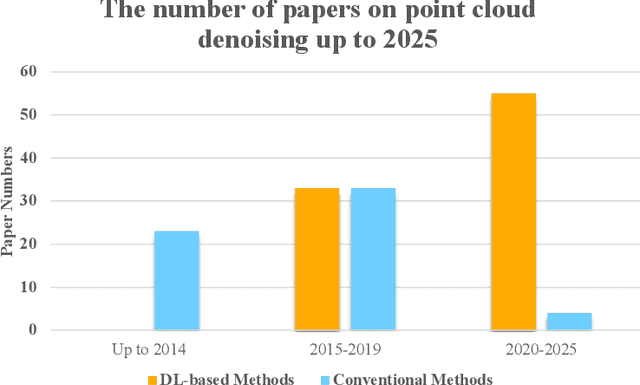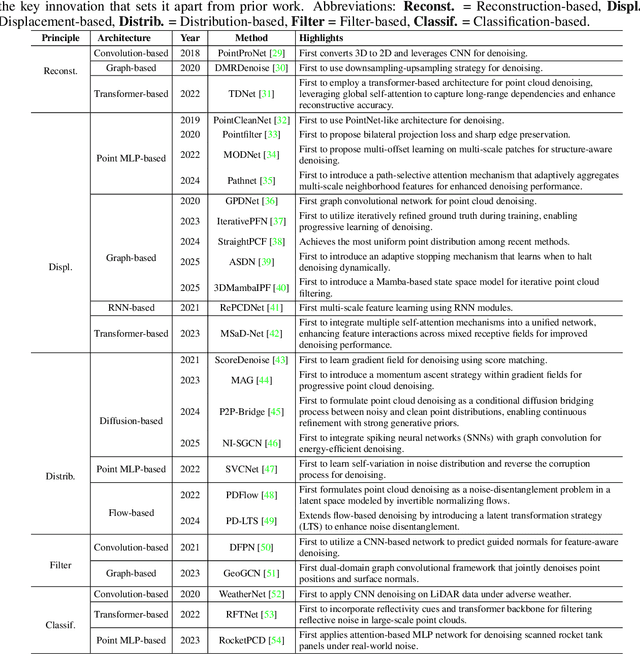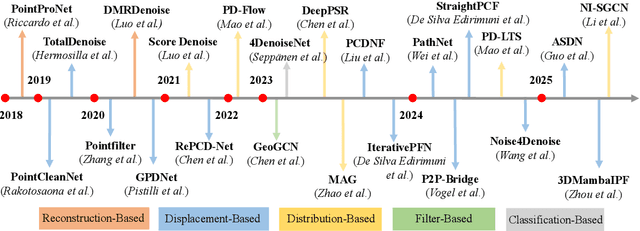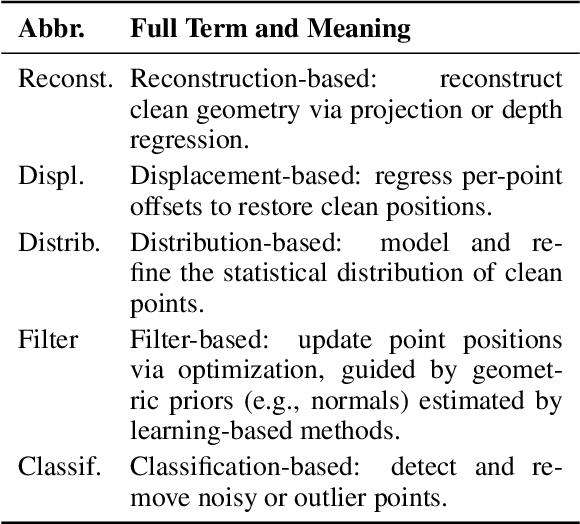Zheng Liu
MinerU2.5: A Decoupled Vision-Language Model for Efficient High-Resolution Document Parsing
Sep 26, 2025Abstract:We introduce MinerU2.5, a 1.2B-parameter document parsing vision-language model that achieves state-of-the-art recognition accuracy while maintaining exceptional computational efficiency. Our approach employs a coarse-to-fine, two-stage parsing strategy that decouples global layout analysis from local content recognition. In the first stage, the model performs efficient layout analysis on downsampled images to identify structural elements, circumventing the computational overhead of processing high-resolution inputs. In the second stage, guided by the global layout, it performs targeted content recognition on native-resolution crops extracted from the original image, preserving fine-grained details in dense text, complex formulas, and tables. To support this strategy, we developed a comprehensive data engine that generates diverse, large-scale training corpora for both pretraining and fine-tuning. Ultimately, MinerU2.5 demonstrates strong document parsing ability, achieving state-of-the-art performance on multiple benchmarks, surpassing both general-purpose and domain-specific models across various recognition tasks, while maintaining significantly lower computational overhead.
Non-Linear Trajectory Modeling for Multi-Step Gradient Inversion Attacks in Federated Learning
Sep 26, 2025Abstract:Federated Learning (FL) preserves privacy by keeping raw data local, yet Gradient Inversion Attacks (GIAs) pose significant threats. In FedAVG multi-step scenarios, attackers observe only aggregated gradients, making data reconstruction challenging. Existing surrogate model methods like SME assume linear parameter trajectories, but we demonstrate this severely underestimates SGD's nonlinear complexity, fundamentally limiting attack effectiveness. We propose Non-Linear Surrogate Model Extension (NL-SME), the first method to introduce nonlinear parametric trajectory modeling for GIAs. Our approach replaces linear interpolation with learnable quadratic B\'ezier curves that capture SGD's curved characteristics through control points, combined with regularization and dvec scaling mechanisms for enhanced expressiveness. Extensive experiments on CIFAR-100 and FEMNIST datasets show NL-SME significantly outperforms baselines across all metrics, achieving order-of-magnitude improvements in cosine similarity loss while maintaining computational efficiency.This work exposes heightened privacy vulnerabilities in FL's multi-step update paradigm and offers novel perspectives for developing robust defense strategies.
A biologically inspired separable learning vision model for real-time traffic object perception in Dark
Sep 05, 2025Abstract:Fast and accurate object perception in low-light traffic scenes has attracted increasing attention. However, due to severe illumination degradation and the lack of reliable visual cues, existing perception models and methods struggle to quickly adapt to and accurately predict in low-light environments. Moreover, there is the absence of available large-scale benchmark specifically focused on low-light traffic scenes. To bridge this gap, we introduce a physically grounded illumination degradation method tailored to real-world low-light settings and construct Dark-traffic, the largest densely annotated dataset to date for low-light traffic scenes, supporting object detection, instance segmentation, and optical flow estimation. We further propose the Separable Learning Vision Model (SLVM), a biologically inspired framework designed to enhance perception under adverse lighting. SLVM integrates four key components: a light-adaptive pupillary mechanism for illumination-sensitive feature extraction, a feature-level separable learning strategy for efficient representation, task-specific decoupled branches for multi-task separable learning, and a spatial misalignment-aware fusion module for precise multi-feature alignment. Extensive experiments demonstrate that SLVM achieves state-of-the-art performance with reduced computational overhead. Notably, it outperforms RT-DETR by 11.2 percentage points in detection, YOLOv12 by 6.1 percentage points in instance segmentation, and reduces endpoint error (EPE) of baseline by 12.37% on Dark-traffic. On the LIS benchmark, the end-to-end trained SLVM surpasses Swin Transformer+EnlightenGAN and ConvNeXt-T+EnlightenGAN by an average of 11 percentage points across key metrics, and exceeds Mask RCNN (with light enhancement) by 3.1 percentage points. The Dark-traffic dataset and complete code is released at https://github.com/alanli1997/slvm.
A Survey of Deep Learning-based Point Cloud Denoising
Aug 23, 2025



Abstract:Accurate 3D geometry acquisition is essential for a wide range of applications, such as computer graphics, autonomous driving, robotics, and augmented reality. However, raw point clouds acquired in real-world environments are often corrupted with noise due to various factors such as sensor, lighting, material, environment etc, which reduces geometric fidelity and degrades downstream performance. Point cloud denoising is a fundamental problem, aiming to recover clean point sets while preserving underlying structures. Classical optimization-based methods, guided by hand-crafted filters or geometric priors, have been extensively studied but struggle to handle diverse and complex noise patterns. Recent deep learning approaches leverage neural network architectures to learn distinctive representations and demonstrate strong outcomes, particularly on complex and large-scale point clouds. Provided these significant advances, this survey provides a comprehensive and up-to-date review of deep learning-based point cloud denoising methods up to August 2025. We organize the literature from two perspectives: (1) supervision level (supervised vs. unsupervised), and (2) modeling perspective, proposing a functional taxonomy that unifies diverse approaches by their denoising principles. We further analyze architectural trends both structurally and chronologically, establish a unified benchmark with consistent training settings, and evaluate methods in terms of denoising quality, surface fidelity, point distribution, and computational efficiency. Finally, we discuss open challenges and outline directions for future research in this rapidly evolving field.
MetaAgent: Toward Self-Evolving Agent via Tool Meta-Learning
Aug 01, 2025Abstract:In this work, we propose MetaAgent, an agentic paradigm inspired by the principle of learning-by-doing, where expertise is developed through hands-on practice and continual self-improvement. MetaAgent starts with a minimal workflow, equipped only with basic reasoning and adaptive help-seeking abilities. When a knowledge gap is encountered, MetaAgent generates natural language help requests, which are routed to the most suitable external tool by a dedicated tool router. As MetaAgent solves tasks, it continually conducts self-reflection and answer verification, distilling actionable experience into concise texts that are dynamically incorporated into future task contexts. Besides, MetaAgent autonomously builds in-house tools and a persistent knowledge base by organizing its tool-use history, further enhancing its ability to retrieve and integrate relevant information We term this continual, data-driven process as \textit{meta tool learning}, through which MetaAgent incrementally refines its reasoning and tool-use strategies, without changing model parameters or requiring further post-training. Evaluated on challenging knowledge discovery benchmarks, including GAIA, WebWalkerQA, and BrowseCamp, MetaAgent consistently outperforms workflow-based baselines and matches or exceeds end-to-end trained agents, demonstrating the promise of self-evolving agentic systems for robust, general-purpose knowledge discovery. We provide our source codes in https://github.com/qhjqhj00/MetaAgent.
Video-XL-2: Towards Very Long-Video Understanding Through Task-Aware KV Sparsification
Jun 24, 2025Abstract:Multi-modal large language models (MLLMs) models have made significant progress in video understanding over the past few years. However, processing long video inputs remains a major challenge due to high memory and computational costs. This makes it difficult for current models to achieve both strong performance and high efficiency in long video understanding. To address this challenge, we propose Video-XL-2, a novel MLLM that delivers superior cost-effectiveness for long-video understanding based on task-aware KV sparsification. The proposed framework operates with two key steps: chunk-based pre-filling and bi-level key-value decoding. Chunk-based pre-filling divides the visual token sequence into chunks, applying full attention within each chunk and sparse attention across chunks. This significantly reduces computational and memory overhead. During decoding, bi-level key-value decoding selectively reloads either dense or sparse key-values for each chunk based on its relevance to the task. This approach further improves memory efficiency and enhances the model's ability to capture fine-grained information. Video-XL-2 achieves state-of-the-art performance on various long video understanding benchmarks, outperforming existing open-source lightweight models. It also demonstrates exceptional efficiency, capable of processing over 10,000 frames on a single NVIDIA A100 (80GB) GPU and thousands of frames in just a few seconds.
OmniGen2: Exploration to Advanced Multimodal Generation
Jun 23, 2025Abstract:In this work, we introduce OmniGen2, a versatile and open-source generative model designed to provide a unified solution for diverse generation tasks, including text-to-image, image editing, and in-context generation. Unlike OmniGen v1, OmniGen2 features two distinct decoding pathways for text and image modalities, utilizing unshared parameters and a decoupled image tokenizer. This design enables OmniGen2 to build upon existing multimodal understanding models without the need to re-adapt VAE inputs, thereby preserving the original text generation capabilities. To facilitate the training of OmniGen2, we developed comprehensive data construction pipelines, encompassing image editing and in-context generation data. Additionally, we introduce a reflection mechanism tailored for image generation tasks and curate a dedicated reflection dataset based on OmniGen2. Despite its relatively modest parameter size, OmniGen2 achieves competitive results on multiple task benchmarks, including text-to-image and image editing. To further evaluate in-context generation, also referred to as subject-driven tasks, we introduce a new benchmark named OmniContext. OmniGen2 achieves state-of-the-art performance among open-source models in terms of consistency. We will release our models, training code, datasets, and data construction pipeline to support future research in this field. Project Page: https://vectorspacelab.github.io/OmniGen2; GitHub Link: https://github.com/VectorSpaceLab/OmniGen2
VideoDeepResearch: Long Video Understanding With Agentic Tool Using
Jun 12, 2025Abstract:Long video understanding (LVU) presents a significant challenge for current multi-modal large language models (MLLMs) due to the task's inherent complexity and context window constraint. It is widely assumed that addressing LVU tasks requires foundation MLLMs with extended context windows, strong visual perception capabilities, and proficient domain expertise. In this work, we challenge this common belief by introducing VideoDeepResearch, a novel agentic framework for long video understanding. Our approach relies solely on a text-only large reasoning model (LRM) combined with a modular multi-modal toolkit, including multimodal retrievers and visual perceivers, all of which are readily available in practice. For each LVU task, the system formulates a problem-solving strategy through reasoning, while selectively accessing and utilizing essential video content via tool using. We conduct extensive experiments on popular LVU benchmarks, including MLVU, Video-MME, and LVBench. Our results demonstrate that VideoDeepResearch achieves substantial improvements over existing MLLM baselines, surpassing the previous state-of-the-art by 9.6%, 6.6%, and 3.9% on MLVU (test), LVBench, and LongVideoBench, respectively. These findings highlight the promise of agentic systems in overcoming key challenges in LVU problems.
Fact in Fragments: Deconstructing Complex Claims via LLM-based Atomic Fact Extraction and Verification
Jun 09, 2025Abstract:Fact verification plays a vital role in combating misinformation by assessing the veracity of claims through evidence retrieval and reasoning. However, traditional methods struggle with complex claims requiring multi-hop reasoning over fragmented evidence, as they often rely on static decomposition strategies and surface-level semantic retrieval, which fail to capture the nuanced structure and intent of the claim. This results in accumulated reasoning errors, noisy evidence contamination, and limited adaptability to diverse claims, ultimately undermining verification accuracy in complex scenarios. To address this, we propose Atomic Fact Extraction and Verification (AFEV), a novel framework that iteratively decomposes complex claims into atomic facts, enabling fine-grained retrieval and adaptive reasoning. AFEV dynamically refines claim understanding and reduces error propagation through iterative fact extraction, reranks evidence to filter noise, and leverages context-specific demonstrations to guide the reasoning process. Extensive experiments on five benchmark datasets demonstrate that AFEV achieves state-of-the-art performance in both accuracy and interpretability.
Towards Effective Code-Integrated Reasoning
May 30, 2025Abstract:In this paper, we investigate code-integrated reasoning, where models generate code when necessary and integrate feedback by executing it through a code interpreter. To acquire this capability, models must learn when and how to use external code tools effectively, which is supported by tool-augmented reinforcement learning (RL) through interactive learning. Despite its benefits, tool-augmented RL can still suffer from potential instability in the learning dynamics. In light of this challenge, we present a systematic approach to improving the training effectiveness and stability of tool-augmented RL for code-integrated reasoning. Specifically, we develop enhanced training strategies that balance exploration and stability, progressively building tool-use capabilities while improving reasoning performance. Through extensive experiments on five mainstream mathematical reasoning benchmarks, our model demonstrates significant performance improvements over multiple competitive baselines. Furthermore, we conduct an in-depth analysis of the mechanism and effect of code-integrated reasoning, revealing several key insights, such as the extension of model's capability boundaries and the simultaneous improvement of reasoning efficiency through code integration. All data and code for reproducing this work are available at: https://github.com/RUCAIBox/CIR.
 Add to Chrome
Add to Chrome Add to Firefox
Add to Firefox Add to Edge
Add to Edge